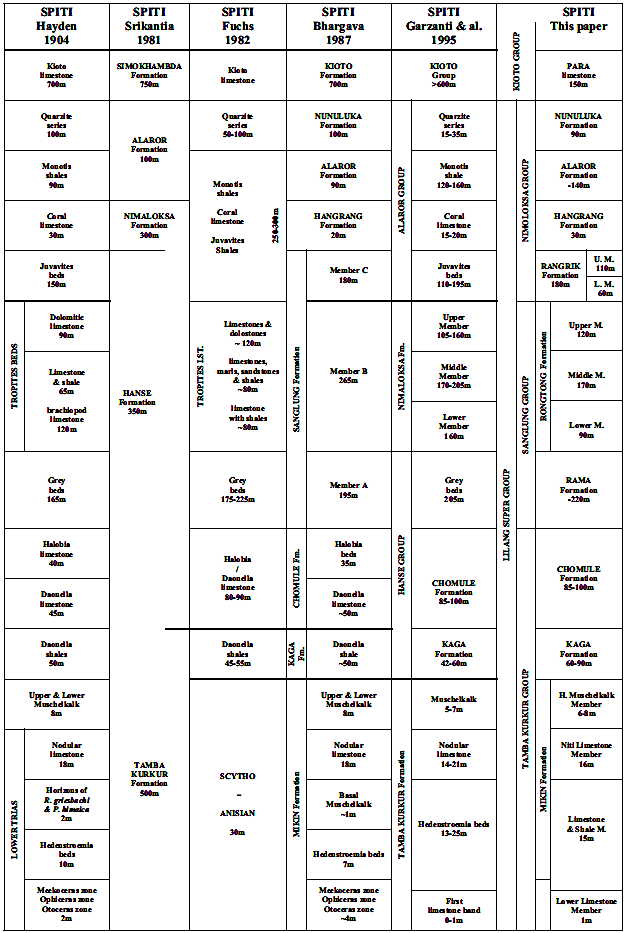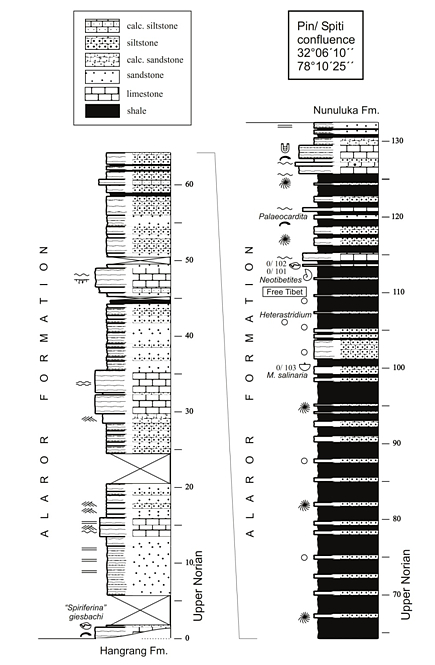Alaror Fm
Type Locality and Naming
Type section is between Kioto and Lagudarsi Pass. [Original Publication: Srikantia, S.V., 1981. The lithostratigraphy, sedimentation and structure of Proterozoic–Phanerozoic formations of Spiti basin in the higher Himalaya of Himachal Pradesh, India. In: Sinha, A.K. (Ed.), Contemporary Geoscientific Researches in India (a commemorative volume in honor of S.P. Nautiyal). Bishen Singh Mahendra Pal Singh, Dehra Dun, pp. 31–48. Redefined by Bhargava, O.N., Krystyn, L., Balini. M., Lein, R. and Nicora, A. 2004. Revised Litho- and Sequence Stratigraphy of the Spiti Triassic. Albertiana (Supplement), 30: p. 21-38.]
Synonyms: Monotis Shale (Hayden, 1904); upper-middle Nimoloksa Gr.; upper Zozar Fm
[Figure: Zanskar-Spiti-Kumaun region location (provided by Om Bhargava)]
[Figure 0: History of Triassic lithostratigraphic nomenclature of Spiti (after Bhargava et al., 2004)]
Lithology and Thickness
Clayey limestone. Limestone, shale and siltstone in cyclic order. 140 m,
[Figure 1: Stratigraphic log of the Alaror Formation, Pin-Spiti confluence in Spiti valley (after Bhargava et al., 2004)]
Relationships and Distribution
Lower contact
Lower contact with the Hangrang Fm is conformable but sharp.
Upper contact
Conformable to sharp contact with the overlying Nunuluka Fm.
Regional extent
Zanskar-Spiti and Himachal Pradesh to Kumaun-Garhwal region of Northwest Tethyan Himalaya
GeoJSON
Fossils
Heterastridium sp., Monotis salinaria
Age
Depositional setting
Shallow-marine environment affected by storm, towards upper part it shows deepening followed by shallowing towards the Nunuluka Fm contact (Bhargava, 2008).
Additional Information
It equals the classic Monotis Shale


